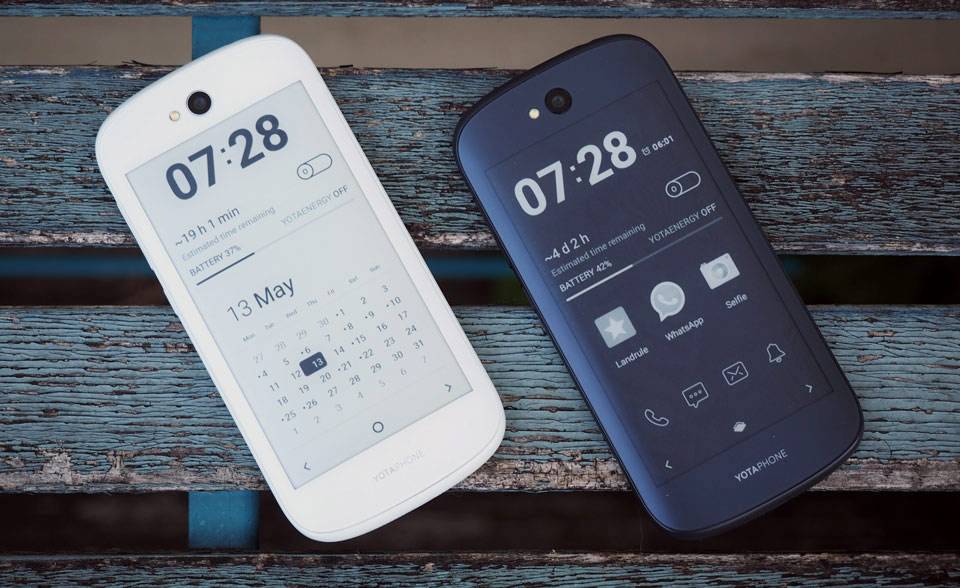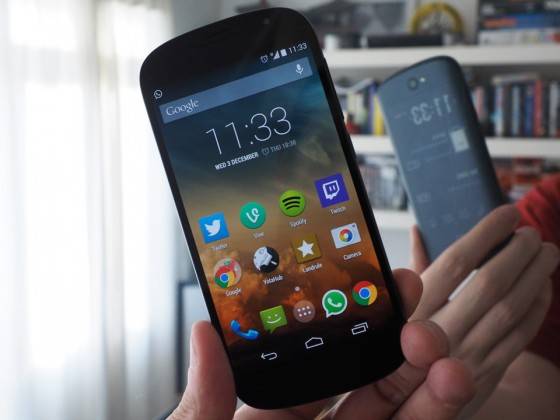
If you saw the first YotaPhone, you would probably remember it – one AMOLED screen in front and an e-Ink on the back, certainly a novel design and techy enough to win “Best of CES” awards in that particular trade show. The YotaPhone 2 shows everything better than the first iteration, already available in Europe and now ready to launch in the US and Canada via an Indiegogo campaign.
We’ll talk about the campaign in just a bit, but let’s take a look at what you will be getting in the device. First up, you will still get the 5-inch AMOLED screen up front as the standard display, while the 4.7-inch e-Ink display will be the “always on” screen. The phone is powered by a more powerful Qualcomm Snapdragon 801 processor supported by 2GB RAM and 32GB of internal storage. You also get wireless charging, Qualcomm’s “fast charge” protocol, an 8MP main shooter, and 4G/LTE capability for GSM networks in North America. Everything runs on Android 5.0 Lollipop.

The Indiegogo campaign has a USD$50,000 goal to be used for all the regulatory fees and certifications the phone needs to be sold normally on the market in the US. There will be USD$500 “early backer” slots for the first 100 backers, that’s a full $100 off the retail price of USD$600. There will also be a USD$75 off period for the first 48 hours. So if this is something that you want, better get it at a discount already.

The “second screen” – which is the “always on” e-Ink one on the back – does take some getting used to. But the logic of the YotaPhone 2 is, rather than pick up your phone, turn on the display, check for notifications – and doing this routine for over a hundred times during the day, the e-Ink display provides you with all the details you need for notifications and stuff without having to turn on your main display, and therefore save on battery power. It changes the way you use your phone, but it does present a good argument. Check out the Indiegogo campaign at the source link below.
SOURCE: Indiegogo
This is a crowdfunded project, and as such may not deliver what its creators initially promise. Most crowdfunding sites, like Kickstarter and Indiegogo, have policies about what happens to your money if the project fails to deliver on its goals, but choosing to back a project is inevitably a risk. Android Community’s reporting on crowdfunded projects should in no way be seen as an endorsement, unless specifically stated, and we recommend closely examining the terms and conditions to understand your individual rights as a backer before making a pledge.









